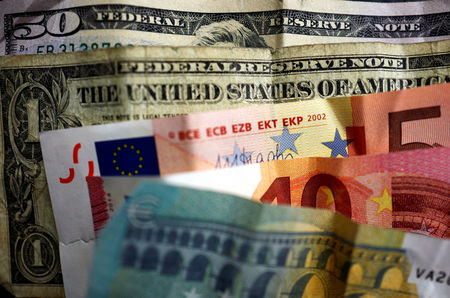
By Robert Harvey and Enes Tunagur
(Reuters) -Oil prices were set for their biggest weekly rise in almost two months on Friday, gaining 4% as an intensifying war in Ukraine returned a geopolitical risk premium to the market.
Brent crude futures had pared 9 cents to $74.14 a barrel by 1418 GMT. U.S. West Texas Intermediate crude futures shaved off 3 cents to $70.07 per barrel.
Pressuring prices on Friday, euro zone business activity took a surprisingly sharp turn for the worse this month as the bloc’s dominant services industry contracted and manufacturing sank deeper into recession.
Kazakhstan’s largest oilfield, Tengiz, is scheduled to return to full production in early December, Russian news agency Interfax reported on Friday, while elsewhere Kazakhstan’s energy ministry said it plans to produce 90 million metric tons of oil in 2025, up from 88 million tons in 2024.
Both contracts are set for gains of nearly 4% this week, as Moscow steps up its Ukraine offensive after Britain and the United States allowed Kyiv to strike deeper into Russia with their missiles.
“The Russia-Ukraine escalation has raised geopolitical tensions beyond levels seen during the year-long conflict between Israel and Iran-backed militants,” Saxo Bank analyst Ole Hansen said on Friday.
He added that rising refinery margins and an incoming cold snap had also supported distillate refinery profit margins, and wider oil prices, this week.
The Kremlin said on Friday that a strike on Ukraine using a newly developed hypersonic ballistic missile was a message to the West that Moscow will respond harshly to any “reckless” Western actions in support of Ukraine.
Ukraine has used drones to target Russian oil infrastructure, for instance in June, when it used long-range attack drones to strike four Russian refineries.
“What the market fears is accidental destruction in any part of oil, gas and refining that not only causes long-term damage but accelerates a war spiral,” said PVM analyst John Evans.

Also supporting prices this week, China announced policy measures on Thursday to boost trade, including support for energy product imports, amid worries over U.S. President-elect Donald Trump’s threats to impose tariffs.
China’s crude oil imports are set to rebound in November, according to analysts, traders and ship tracking data.
This post is originally published on INVESTING.




